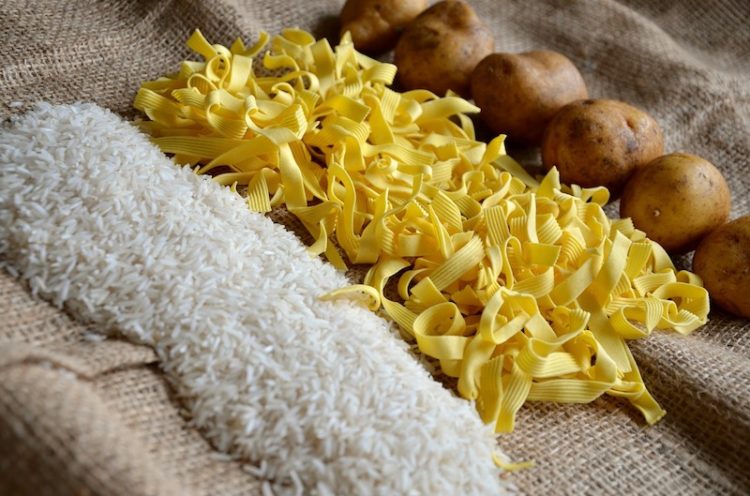Dr. Layne Norton is a titan in the field of nutrition, a veritable behemoth of knowledge who holds a PhD in Nutritional Science along with seven bodybuilding titles and six powerlifting titles — for a time, he even held the -93kg IPF squat world record with 303kg/668lb. Also the creator of the nutrition coaching app Carbon, he’s extraordinarily well rounded in the fields of building strength, getting jacked, shredding fat and debating nutrition science, which he’s even done on the Joe Rogan Experience.
(He also been on our podcast if you want to check that out.)
He’s one of the most influential folks in the fitness space, and today you’re going to learn:
- Layne Norton’s macronutrients
- How he adjusts protein based on goals
- His recommended minimum for fat intake
- How much of your carbs should be fiber?
- Is carb cycling best?
- Layne Norton’s meal prep tips
- Layne Norton’s supplements
When he’s consulting with clients he charges a lot more for this information than the zero dollars it costs to read this article, so we were very grateful for the opportunity to learn from him — and we think you will be, too.
Editor’s note: The content on BarBend is meant to be informative in nature, but it should not be taken as medical advice. The opinions and articles on this site are not intended for use as diagnosis, prevention, and/or treatment of health problems. Speak with your physician before undertaking any new weight loss regimen.
Layne Norton’s Macronutrient Recommendations
First, let’s talk about the hotly debated topic of macronutrient recommendations. How much does your carb and fat intake matter? Not all that much, or rather, there’s no hard rule: Layne says so long as your calories and protein are in check, you can adjust your fat and carbs based on what feels best for you.
Protein
With his clients, first he works out calories based on goals — fat loss, muscle gain, maintenance — then he determines protein, but he bases his protein recommendation off of lean body mass (LBM), not total weight. (Your LBM is your weight minus your body fat.)
“If I’m in a gain phase, protein could be anywhere from 2 to 2.4 grams per kilogram of lean body weight,” says Norton. “If I’m in a fat loss phase, I may go as high as anywhere from 2.4 to 3 grams per kilogram of lean body mass.”
This approach is supported by a few studies, like a 2014 paper by Eric Helms and Alan Aragon, that suggests,
most but not all bodybuilders will respond best to consuming 2.3-3.1 g/kg of lean body mass per day of protein, 15-30% of calories from fat, and the reminder of calories from carbohydrate.(1)
“I’ll deduct (protein) from my calories, and then whatever’s left over is divvied up to carbs or fat by preference,” he says. “If you look at the research out there, either with overfeeding or dieting, there doesn’t seem to be much difference in terms of lean body mass accrual or fat mass accrual with how you split up your carbs and fats, as long as protein and calories are equated.”
This is an unusually lenient approach with carbs and fat, as a lot of coaches will give strict minimums to reach. But if you see the kind of people who tweet at Layne all day (he has one of the most entertaining Twitter accounts in nutrition) you’ll see there’s simply a ton of variety out there: some feel better with more fat, others with more carbs.
After landing on protein, Layne himself usually has the rest of his calories split with 55 percent from carbs and 45 from fat, but that’s just his preference. What your preference is will likely take some experimentation.
[Looking for a place to start? Try our macronutrient calculator]
View this post on Instagram
Fat
You might be wondering why there’s no fat minimum, since, well, aren’t really low fat diets linked to lower testosterone?! Well, sure, in some research, but so are big calorie deficits, so it’s easy to confound the two — most bodybuilders will tell you their sex drive drops as their contest approaches.(2)(3)(4)(5)(6)(7)
“Honestly, I’m not sure where that cap would be (on fat intake), but 0.3 grams per kilogram probably sounds about right,” he says. “You’d be looking at somebody who’s, if you’re 100 kilos you want (at least) 30 grams of fat. That seems about right to me.”
But he’s careful to note this is just conjecture, and the most important thing is calories and protein, then splitting your carbs and fat in a way the feels right to you.
(Note, however, if you’re in a really big weight cut for a bodybuilding contest, know that you probably won’t feel amazing regardless of your macros. The body doesn’t love being under 5 percent body fat.)
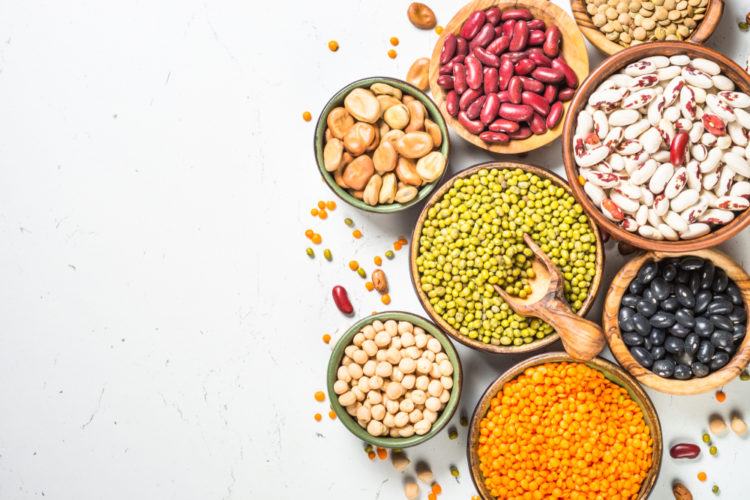
Carbs and Carb Cycling
I wanted to ask two nagging questions here that I felt aren’t usually addressed in the sports nutrition space: how much attention should you pay to your fiber intake, and does carb cycling — eating more carbs and calories on training days — actually have a benefit?
“For the most part, I worry about hitting my macros, I try to eat high-quality foods to get there, and I don’t really worry about a ton more,” Norton answered when I asked if he tracks insoluble and soluble fiber. The message: don’t overthink things too much.
That said, he does like to ensure fiber makes up about 15 percent of his calories from carbs.
“Only for the fact that in terms of body composition and energy balance, fiber has more of a thermic effect than carbohydrates or fats do,” he says. “If you’re not being consistent with your fiber, your energy balance might be jumping around a little bit and you won’t even realize it. There’s obviously benefits for the gut microbiome, then possibly regulatory aspects for the gastrointestinal tract. What seems to come up is that higher-fiber diets are better because of satiety, glycemic control, GI, gut microbiome, and possibly even the volatile fatty acids that are produced as a by-product of gut microbiome metabolism of fibers.
[Related: The 5 Types of Fiber Athletes Should Know About]
At first, the man sounds like a proponent of carb cycling, but listen to his position:
“I know that when I do major lifts, the squat and deadlift especially, I burn probably about 50 to 70 percent more calories during those workouts,” says Norton. “Usually on those days, I’ll bump up my calories a little bit. As far as research showing that to be superior, it doesn’t exist. There are plenty of people who eat the same thing every day and get really good results.
“The fact of the matter is, let’s say you were eating at maintenance and one day you had a really hard workout, the other you’re off, but you eat the same on each day. On the day you’re off, you might be eating over your maintenance, but that means you also have a surplus that rolls into the day where you’re eating under your maintenance while you’re training. The fact is that this stuff kind of rolls together.”
It’s not like the clock strikes midnight, everything resets, and it doesn’t matter what you had the day before. As is the case with your balance of fat and carbs, carb cycling really boils down to personal preference. Layne likes more food on days he’s training harder because he likes it — but that doesn’t mean it’s better.
That’s a crucial distinction that the man is always at pains to point out in his nutrition discussions.
“What I find is, interestingly, people tend to try to validate their personal preferences by trying to do mental gymnastics as to why their preference is better,” he says. “I always tell people, ‘Why is it just not OK to say, you just prefer that?’ I just prefer that.”
View this post on Instagram
Layne Norton’s Meal Prep Staples
It’s really easy to read about the precise number of grams of this and that that you should consume, but it’s harder to put it into practice.
Does Norton have a lot of staple meals he uses? When asked about practical tips, he said he preaches the concept of structured flexibility.
“If I’m in contest prep, by the end of it I’m going to be extremely rigid and very inflexible. Counter to that, if I’m not competing in anything and I’m just in maintenance mode or building, I allow myself much more flexibility,” he says, referring to a time when he recently bulked to the -105kg weight class.
When he’s in his caloric-restriction phase, he cooked up 10 pounds of chicken breast at the start of every week and heats frozen veggies for micronutrients — on lower calories, it’s harder to hit a high protein goal, particularly as he increases his protein intake as he loses weight.
His go-t0 fat loss meals are usually a combination of chicken breast, frozen veggies, and carbs, which he correctly notes are pretty easy to get.
“Now that I’m in a building phase and my calories back above 3,000, I don’t have to do that anymore. Getting protein sources with that many calories is easy. I just got a microwave meal, protein shake, Greek yogurt,” he says. “It just expands my ability to be flexible on my protein sources. When my calories are low, I have to be much more inflexible.”
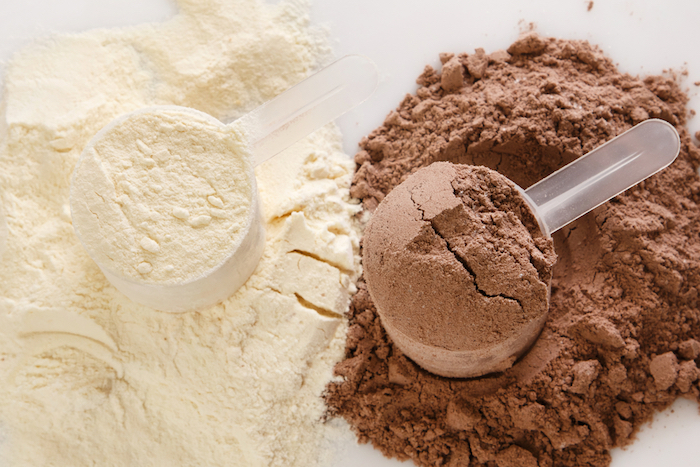
Layne Norton’s Supplements
About to launch a supplement company (Outwork Nutrition) this fall, supplements are a subject near and dear to his heart. He approaches them by dividing them into three tiers.
Tier 1
First on this list will probably not come as a surprise.
Whey protein
“Just for a convenient protein source,” he says. “One, it’s a high-quality protein, a lot of leucine content in there. Two, it generally tastes very good. And three, it’s pretty inexpensive, so I think whey protein is a great supplement. If you have no GI problems and you don’t care about lactose, a whey protein concentrate is just fine.”
If you do have gastrointestinal issues from lactose or if you’re really trying to minimize carbs and fat, whey isolate might be a better bet, as it’s had much of the lactose and fat stripped out of it and offers more protein per gram.
[Related: The Differences Between Whey Concentrate, Isolate, and Hydrolysate]
Creatine Monohydrate
“It’s king, there is no supplement that has been tested more, with better results consistently, in the scientific literature for increasing lean body mass and increasing strength, and it’s cheap and effective,” he says. “That’s why supplement companies are always trying to come out with new forms of creatine so they can charge you more. (But) creatine monohydrate has been shown to saturate the muscle cell’s phosphocreatine stores 100 percent. You don’t need anything else. Don’t waste your money on anything else.”
Layne notes that creatine hydrochloride, while it’s possible you need less of it to saturate your muscles, still doesn’t match up in terms of price. It’s so much more expensive that the lower dose doesn’t make it a cheaper option.
[Related: What’s the Best Type of Creatine?]
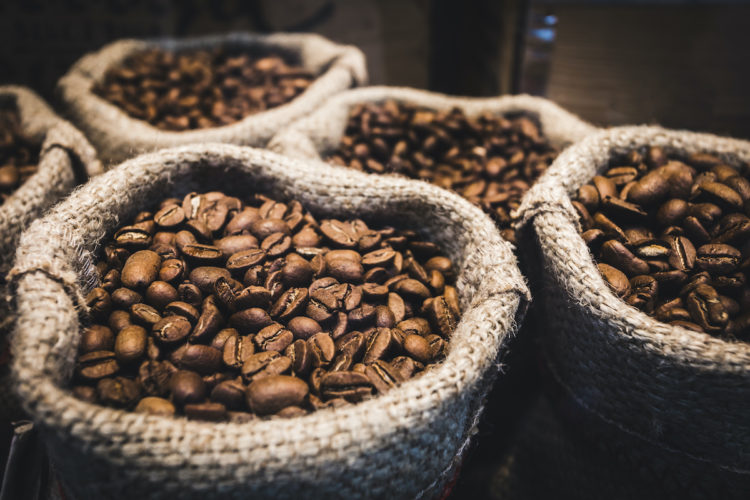
Caffeine
“Not sexy, but it is one of the most effective supplements out there,” he says. “In terms of if you want something that will immediately improve performance focus, those sorts of things, caffeine is your best bet. You can build up a tolerance and some people are very sensitive to it. Take as per what your tolerance is. I tell people, probably every few months, it’s not a bad idea to do a caffeine reset where you go cold turkey for about a week. You can completely reset your caffeine tolerance. I’ve done it, it works great. It feels like crap during that week where you’re not having it, but you get over it. You sleep great though.”

Tier 2
Here we find a few common pre-workout ingredients.
Beta-Alanine
“If you’re somebody who likes to do high repetition work or you like to do high intensity cardio, beta-alanine has some good data on it. There’s some data that suggests it may increase lean body mass.”
With interesting links to endurance, the typical dose is 1.6 to 3.2 grams at a time — just note that it causes paresthesia, a harmless “tingling” sensation.(8)(9)
[RELATED: Best Pre-Workout Supplements]
Citrulline Malate
Citrulline, meanwhile, has links to improving blood flow — it’s actually often used in erectile dysfunction supplements because of this — and 5 or so grams is the dose that some studies have seen improvements in anaerobic and aerobic workouts, power output, and time to fatigue.(10)(11)(12)(13)(14)(15)(16)
Nootropics
“I really like things like Rhodiola rosea, that’s an adaptogen. It has some really good data around it on fatigue resistance and perception of fatigue. That’s something I like in a pre-workout.”(17)
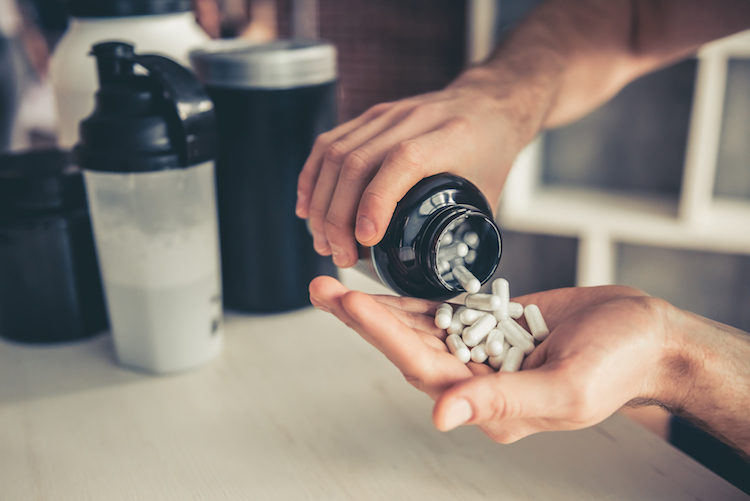
Tier 3
“I would consider these in the third tier, but only because the research right now is all positives, but it’s just not very much. I want to see more.”
Tart Cherry Extract
“It can reduce delayed onset muscle soreness. There’s some really good evidence for that in resistance-trained individuals.”(18)(19)
Ashwagandha
“A promising supplement that we are putting in our product — I still want to see more research on it — is ashwagandha. There seems to be some really promising literature on that.”
A plant in the nightshade family, a good amount of evidence suggests that a couple of grams of ashwagandha can be useful for helping to manage fatigue, improve focus, reduce anxiety, and maybe even help with sports performance.(20)(21)(22)
Wrapping Up
That’s everything from Dr. Layne Norton on the questions he’s most commonly asked on supplements, fat loss, and muscle gain. Be sure to check out his app Carbon, which gives nutrition recommendations based on your goals and preferences with help from real life coaches, if you like what you’ve heard — we’re grateful to the man for taking the time to reveal some of his most actionable supplement tips.
References
1. Helms, ER et al. Evidence-based recommendations for natural bodybuilding contest preparation: nutrition and supplementation. J Int Soc Sports Nutr . 2014 May 12;11:20.
2. Mumford, SL et al. Dietary fat intake and reproductive hormone concentrations and ovulation in regularly menstruating women. Am J Clin Nutr . 2016 Mar;103(3):868-77.
3. Dorgan, JF et al. Effects of dietary fat and fiber on plasma and urine androgens and estrogens in men: a controlled feeding study. Am J Clin Nutr . 1996 Dec;64(6):850-5.
4. Minguez-Alarcón, L et al. Fatty acid intake in relation to reproductive hormones and testicular volume among young healthy men. Asian J Androl . Mar-Apr 2017;19(2):184-190.
5. Cangemi, R et al. Long-term effects of calorie restriction on serum sex-hormone concentrations in men. Aging Cell . 2010 Apr;9(2):236-42.
6. Moro, T et al. Effects of eight weeks of time-restricted feeding (16/8) on basal metabolism, maximal strength, body composition, inflammation, and cardiovascular risk factors in resistance-trained males. J Transl Med . 2016 Oct 13;14(1):290.
7. Martin, CK et al. Effect of Calorie Restriction on Mood, Quality of Life, Sleep, and Sexual Function in Healthy Nonobese Adults: The CALERIE 2 Randomized Clinical Trial. JAMA Intern Med . 2016 Jun 1;176(6):743-52.
8. Hobson, RM et al. Effects of β-alanine supplementation on exercise performance: a meta-analysis. Amino Acids . 2012 Jul;43(1):25-37.
9. Stout, JR et al. Effects of beta-alanine supplementation on the onset of neuromuscular fatigue and ventilatory threshold in women. Amino Acids . 2007;32(3):381-6.
10. Wylie, LJ et al. Dietary nitrate supplementation improves team sport-specific intense intermittent exercise performance. Eur J Appl Physiol . 2013 Jul;113(7):1673-84.
11. Lansley, KE et al. Dietary nitrate supplementation reduces the O2 cost of walking and running: a placebo-controlled study. J Appl Physiol (1985) . 2011 Mar;110(3):591-600.
12. Kelly, J et al. Effects of short-term dietary nitrate supplementation on blood pressure, O2 uptake kinetics, and muscle and cognitive function in older adults. Am J Physiol Regul Integr Comp Physiol . 2013 Jan 15;304(2):R73-83.
13. Murphy, M et al. Whole beetroot consumption acutely improves running performance. J Acad Nutr Diet . 2012 Apr;112(4):548-52.
14. Lansley, KE et al. Dietary nitrate supplementation reduces the O2 cost of walking and running: a placebo-controlled study. J Appl Physiol (1985) . 2011 Mar;110(3):591-600.
15. Suzuku, T et al. Oral L-citrulline supplementation enhances cycling time trial performance in healthy well-trained males. J Int Soc Sports Nutr. 2015; 12(Suppl 1): P52.
16. Glenn, JM et al. Acute citrulline-malate supplementation improves maximal strength and anaerobic power in female, masters athletes tennis players. Eur J Sport Sci . 2016 Nov;16(8):1095-103.
17. Kung, SH et al. The effectiveness and efficacy of Rhodiola rosea L.: a systematic review of randomized clinical trials. Phytomedicine . 2011 Feb 15;18(4):235-44.
18. Levers, K et al. Effects of powdered Montmorency tart cherry supplementation on an acute bout of intense lower body strength exercise in resistance trained males. J Int Soc Sports Nutr . 2015 Nov 16;12:41.
19. Kuehl, KS et al. Efficacy of tart cherry juice in reducing muscle pain during running: a randomized controlled trial. J Int Soc Sports Nutr . 2010 May 7;7:17.
20. Sandhu, JS et al. Effects of Withania somnifera (Ashwagandha) and Terminalia arjuna (Arjuna) on physical performance and cardiorespiratory endurance in healthy young adults. Int J Ayurveda Res . 2010 Jul;1(3):144-9.
21. Andrade, C et al. A double-blind, placebo-controlled evaluation of the anxiolytic efficacy ff an ethanolic extract of withania somnifera. . 2000 Jul;42(3):295-301.
22. Wankhede, S et al. Examining the effect of Withania somnifera supplementation on muscle strength and recovery: a randomized controlled trial. J Int Soc Sports Nutr . 2015 Nov 25;12:43.
